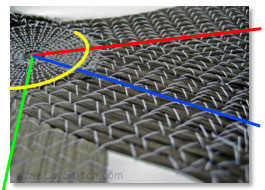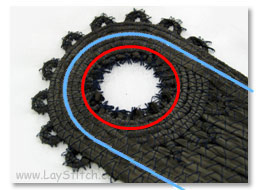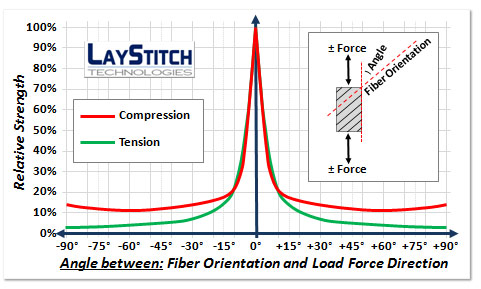|
 |

Free Fiber Orientation
|
 Circles, Arcs & Angles Circles, Arcs & Angles
|
Tailored Fiber Placement
Automated Tailored Fiber Placement (TFP) is made possible with our FiberPrinter™ Technology, a Robust and Automated Machine Solution for laying out (printing) Fiber Tow/Roving for Carbon Fiber-Reinforced Composites. The fiber is attached by stitching. This allows fiber to be placed freely and selectively, thus combining Cost Benefits and Improved Product Characteristics.
TFP Design Made Easy
Designing a TFP preform is easy and fast using our Automated Design Software. After the design is made it can be instantly printed in the laying machine. Adjustments of the design is made easy by the Scaling feature.
Free Fiber Orientation Benefit = Peak Performance Composites
The free fiber orientation feature makes it possible to utilize the full tensile strength of the fiber during product design. The fiber can be laid out selectively and precisely in complex shapes like Circles, Curves and Arcs, and with any angle of direction, greatly boosting freedom of design.
Local Fiber Reinforcements
For optimized stiffness and strength, local reinforcement is easily achieved via selectively stacking layers of fibers on top of previously laid out fibers.
Considerably Lower Cost
By laying out Fiber Tow/Roving selectively and only where needed, Preform material cost may be reduced by as much as 75-90% vs. using more expensive materials like braided, woven or knitted multi axial materials.
Minimizing Production Waste
By producing Near-Net Shape Preforms, material scrap during pre-form production is minimized or totally eliminated, lowering costs.
Material Combinations
Various types of materials can be combined within a single design, including Carbon, Glass, Aramid, Natural Fibers and more. These hybrid fabrics make use of the best properties of each material.
Peak Performance Composites with Tailored Fiber Placement
The relative strength of a composite layer depends on the angle (α) between the Fiber Orientation and the Direction of the Load Force within the structure. By aligning the orientation of fibers with the direction of the load force, the relative strength of a composite can often be significantly improved. See below graph.

If the direction of the load force is more that 10 degrees off the actual fiber orientation, the load carrying capacity may be as low as 3-20% of the tensile strength of the fiber. With LayStitch™ Machines and Tailored Fiber Placement, the fiber orientation can be precisely fine tuned and optimized for Peak Performance Composite Strength and Stiffness.
3-Dimensional Technology
Modern Draping Methods and Design Techniques enable production of 3-D TFP preforms.
A precise fiber placement & selective stitching allows for repeatable draping results.
Precise, Reliable and Gentle
Modern machines with thin stitching needles using thin stitching threads are well proven to be Precise, Reliable and gentle to the laid out fiber. The fiber placement and lay result is very consistent over high volume production series.
High Production Capacity
Automated Multi Lay-head machines with fast stitching have a very high production capacity of up to 100K - 2,000K parts annually.
|
|